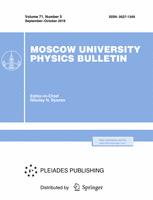Gravitational microlensing is associated with curvature of light rays from a background far star in a gravitational field of a nearer object which results in a characteristic variability of the stellar brightness whose duration is about 1-1000 days. Observations of gravitational microlensing effects through simultaneous registration of the brightness of millions of stars of the Large and Small Magellanic Clouds as well as of the bulge of our Galaxy have been extensively made by a number of research teams in the recent decade. Several hundreds of microlensing phenomena have already been discovered. Since the microlensing effect duration is proportional to the square root of the gravitational lens mass, the masses of dark bodies in the Galaxy have been measured: they are on the average in the range of 0.15—0.90 solar mass. In three cases the mass of dark bodies was found to be equal to about six solar masses which suggests that they are single black holes. By specific features of the gravitational microlensing effects a dark object—gravitational lens—can be identified as a "wormhole" which may exist in accordance with predictions of the Einstein theory of relativity. At present astronomers conduct an active search for "wormholes" using gravitational microlensing effects.
Sternberg Institute of Astronomy, Moscow State University, Moscow, 119991, Russia



